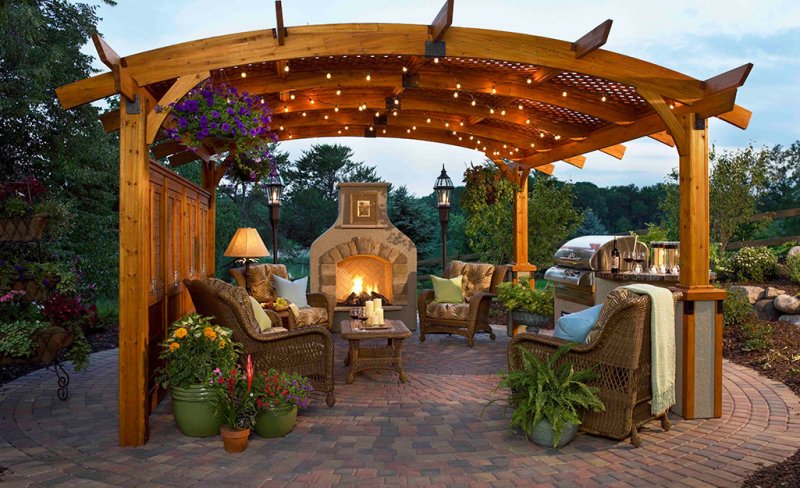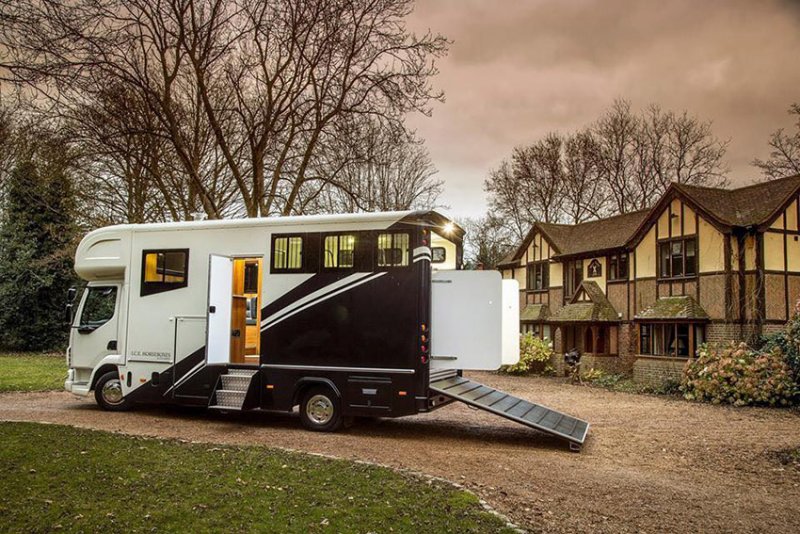
The desire to extend living spaces outdoors is a fundamental aspect of modern home design, offering a seamless transition between indoor comfort and natural beauty. As homeowners increasingly seek to enhance their exterior environments, the question often arises: should I invest in a patio or a pergola?
While both structures markedly improve outdoor living, they serve distinct purposes and offer unique benefits. Making the optimal choice requires a comprehensive understanding of each, careful consideration of individual needs, budget, and aesthetic preferences, alongside an evaluation of long-term utility and property impact.
This guide aims to dissect the characteristics of patios and pergolas, providing a framework to help you navigate this pivotal decision and create an outdoor space that truly resonates with your lifestyle.
Understanding the Patio: The Foundation of Outdoor Living
A patio is essentially a paved outdoor area, typically adjoining a house, designed for recreation, dining, and relaxation. It serves as a durable, level surface that can support furniture, grills, and various outdoor activities.
Key Benefits of a Patio:
- Versatility and Functionality: Patios provide a stable, flat surface, making them incredibly versatile. They are ideal for outdoor dining sets, lounge furniture, fire pits, and even outdoor kitchens, offering a robust foundation for a multitude of activities.
- Increased Usable Space: By extending the footprint of your home, a patio effectively adds valuable square footage to your functional living area, especially suitable for entertaining larger groups.
- Durability and Low Maintenance: Constructed from robust materials like concrete, pavers, natural stone, or brick, patios are designed to withstand varying weather conditions and heavy foot traffic with minimal upkeep.
- Enhanced Property Value: A well-designed and professionally installed patio provides a significant return on investment by boosting curb appeal and increasing the overall market value of your property.
- Seamless Transition: When strategically positioned and designed, a patio can create a fluid connection between indoor and outdoor spaces, blurring the boundaries of your home.
Considerations for a Patio:
- Sun Exposure: Uncovered patios offer no inherent protection from sun or rain, which may limit their utility during extreme weather conditions. Supplementary shade solutions (umbrellas, awnings) are often necessary.
- Cost and Permanence: While offering excellent long-term value, initial installation costs can be substantial, particularly for high-quality materials and complex designs. Patios are a permanent fixture, making future alterations more challenging.
- Drainage Requirements: Proper grading and drainage are critical during installation to prevent water pooling and potential damage to the structure or adjacent foundation.
Understanding the Pergola: The Architectural Statement and Shaded Retreat
A pergola is an open structure with a slatted roof, typically supported by columns or posts, designed to create a shaded walkway, passageway, or seating area. Unlike a solid roof, a pergola's open design allows for partial sunlight while offering a sense of enclosure.
Key Benefits of a Pergola:
- Aesthetic Appeal and Architectural Interest: Pergolas add a distinctive architectural element to any landscape, enhancing visual interest and providing a focal point. Their open framework allows for creative design expressions.
- Partial Shade and Airflow: The slatted roof provides dappled shade, offering relief from direct sun while allowing for excellent airflow, creating a cooler and more comfortable environment than a completely enclosed space.
- Defined Outdoor Rooms: Pergolas excel at defining specific outdoor "rooms" within a larger garden or yard. They can delineate a dining area, an intimate seating nook, or a tranquil reading space.
- Vertical Gardening Opportunity: Their open structure is ideal for supporting climbing plants such as wisteria, grapevines, or roses, which can grow over the top, providing natural shade, fragrance, and an enchanting aesthetic.
- Cost-Effectiveness and Flexibility: Generally, pergolas can be a more budget-friendly option than a comprehensive patio installation. They also offer greater flexibility in terms of placement and the potential for later modifications or additions.
Considerations for a Pergola:
- Limited Weather Protection: While offering shade, a standard pergola provides minimal protection against rain, wind, or intense heat. Options like retractable canopies or solid roof panels can mitigate this but add cost.
- Maintenance: Depending on the material (especially wood), pergolas may require regular staining, sealing, or painting to maintain their appearance and structural integrity.
- Privacy: An open pergola offers limited privacy unless augmented with lattice panels, curtains, or dense climbing foliage.
- Less of a Foundation: While they define a space, pergolas don't create a new, solid ground surface. They are often built over existing patios, decks, or lawns.
Deciding Factors: Patio or Pergola?
The optimal choice hinges on a thorough evaluation of your specific needs and desires. Consider the following comparative factors:
- Primary Purpose and Functionality:
- Choose a Patio if: Your priority is a versatile, durable, and expansive surface for dining, entertaining large groups, accommodating heavy furniture, or implementing an outdoor kitchen. You need a solid foundation for various activities.
- Choose a Pergola if: Your goal is to create a specific, aesthetically pleasing outdoor "room" that offers partial shade, visual interest, and a structure for climbing plants. You prioritize ambiance and definition over a large, open activity space.
- Desired Ambiance and Aesthetic:
- Patio: Can range from minimalist and modern concrete slabs to rustic natural stone, offering a clean, grounded look. The aesthetic largely comes from the material and surrounding landscaping.
- Pergola: Instantly adds verticality, architectural elegance, and a sense of enclosure. It creates a more intimate, often romantic, atmosphere, especially when adorned with plants or lighting.
- Level of Sun and Weather Protection Required:
- Patio (uncovered): Offers no protection from sun or rain. Requires supplementary solutions like umbrellas or awnings if shade is desired.
- Pergola: Provides dappled shade and some relief from direct sun, but minimal protection from rain or high winds. Retractable canopies can enhance protection.
- Budget Considerations:
- Patio: Can be a significant investment, especially for larger areas or premium materials (natural stone). Foundation work and installation complexity contribute to costs.
- Pergola: Often more budget-friendly for a standalone structure. Costs vary based on material (wood, vinyl, metal) and size. However, adding features like retractable roofs or integrated lighting can increase the price.
- Existing Landscape and Home Architecture:
- Consider how each structure will integrate with your home's style and existing garden design. A patio seamlessly extends the home's footprint, while a pergola can act as a standalone feature or an extension.
- The size and shape of your yard will also influence the best fit. A large, flat area might be ideal for a patio, while a smaller, more intimate space could benefit greatly from a pergola.
- Maintenance Commitment:
- Patio: Generally low maintenance, requiring occasional cleaning, sweeping, and weed removal between pavers. Sealing may be required periodically.
- Pergola: Wooden pergolas require regular staining/sealing. Metal or vinyl options are very low maintenance. If climbing plants are involved, they will require regular pruning and care.
- Impact on Property Value and ROI:
- Both can enhance property value. A well-designed patio is a highly sought-after feature, offering tangible usable space. A pergola adds unique architectural interest and defines outdoor living areas, appealing to buyers looking for aesthetic charm.
Hybrid Solutions and Professional Guidance
It's important to note that the choice isn't always binary. Many homeowners opt for a hybrid approach – installing a patio as the functional base and then adding a pergola over a section of it to create a shaded dining or lounge area. This combination offers the best of both worlds: a solid foundation for activities beneath an aesthetically pleasing and partially shaded structure. Other enhancements like outdoor kitchens, built-in seating, or custom lighting can further personalize either structure.
Ultimately, the decision between a patio and a pergola is deeply personal, reflecting your lifestyle, priorities, and vision for your outdoor space. Before making a final commitment, it is highly recommended to consult with landscape architects or design professionals. Their expertise can help you visualize options, navigate local building codes, assess site-specific challenges, and ensure the chosen structure not only meets your needs but also enhances the overall beauty and functionality of your property for years to come. Thoughtful planning today will ensure a rewarding outdoor experience tomorrow.







0 Comments
Post Comment
You will need to Login or Register to comment on this post!